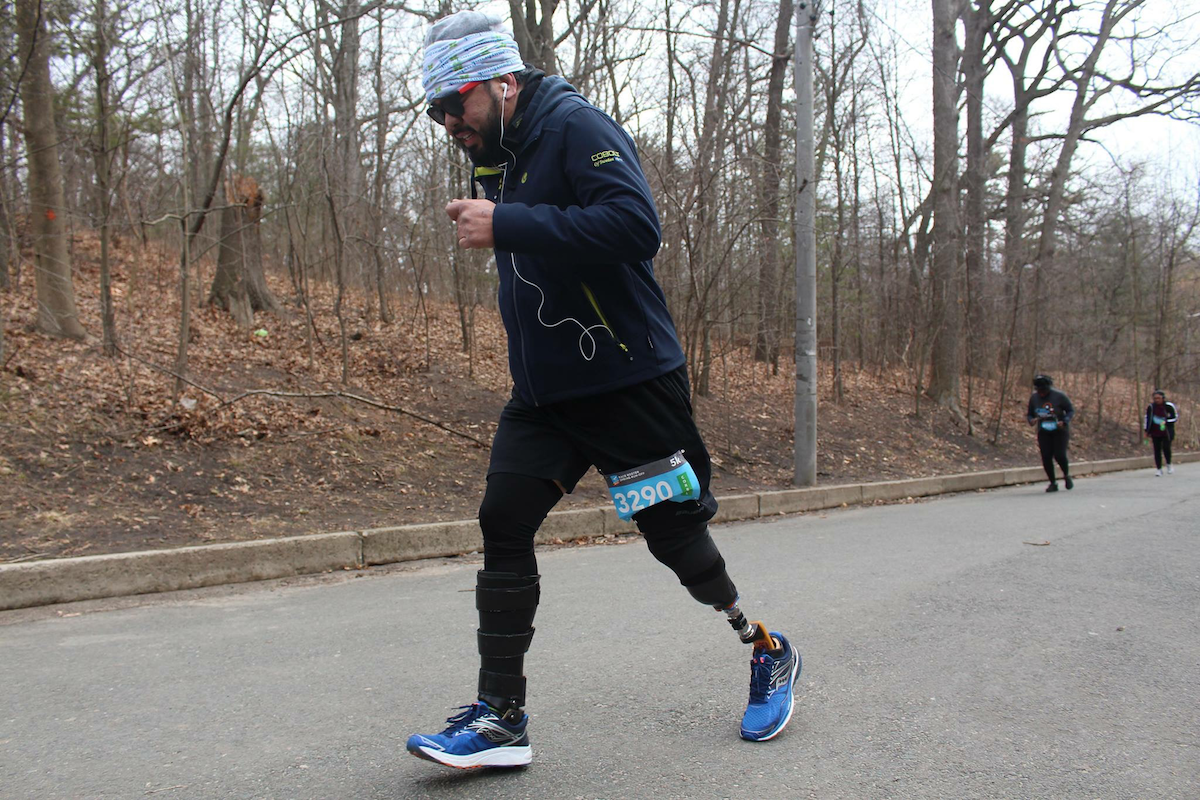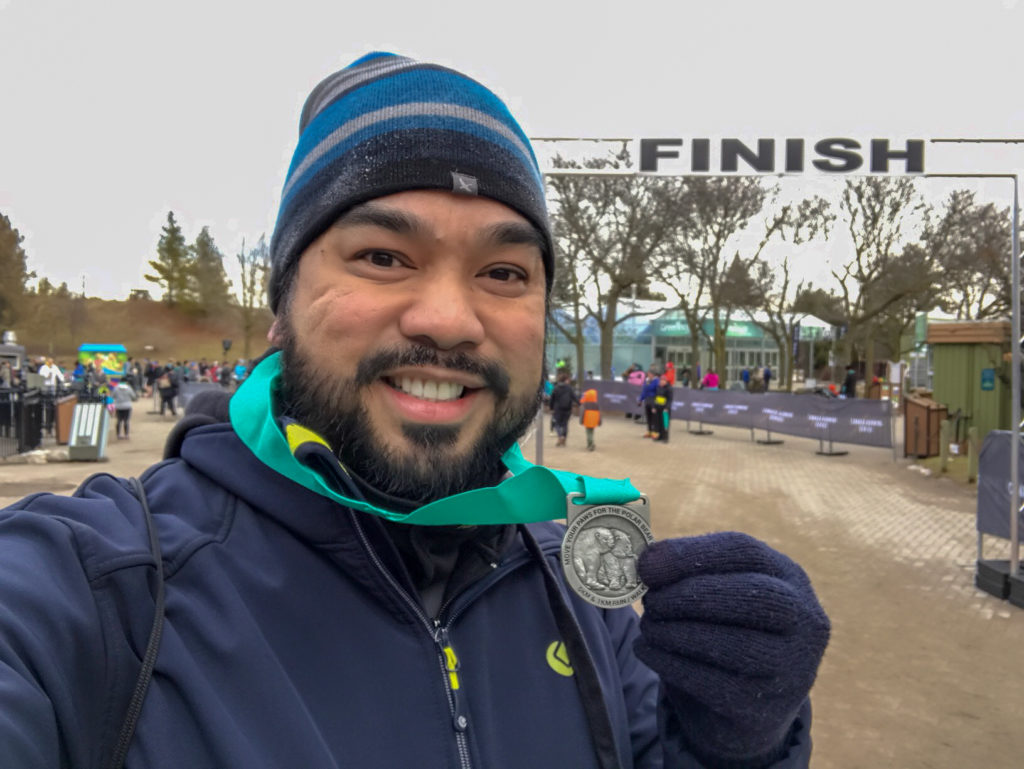
Photo: Mark Gardner.
Aristotle Domingo couldn’t walk two blocks without crying out in pain. His feet were swollen and tender, and he spent his days lying on the couch, wishing the pain away. Domingo, as it turned out, was suffering from septicemia, blood poisoning in his feet. The solution, his doctors told him, was amputation. So, in 2001, Domingo underwent a bilateral amputation where both of his feet were partially removed. “I was basically written off as someone who’ll just be in a wheelchair,” he says.
Despite the surgery, the suffering continued. For the next 16 years, Domingo was in and out of hospitals battling infections and an ongoing peroneal nerve injury (foot drop) in his left foot. Finally, in 2016, his doctor suggested a second amputation, removing the left leg below the knee.
On Jan. 10, 2017, Domingo entered the care of Rouge Valley Centenary Hospital for his second amputation. He was nervous, but he had confidence in his medical team, and, most of all, he just wanted the pain to go away. “All I had in my head was, ‘Can I walk my dog for two blocks without crying?’” The surgery was a success and, despite the long road ahead, it left Domingo feeling like he had a new lease on life. “For me, I felt like I lost a ball and chain attached to me,” he says.
After 10 days in post-op he was transferred to St. John’s Rehab at Sunnybrook Hospital to complete physiotherapy and occupational therapy. There, he was fitted with prosthetics, allowing him to walk pain-free for the first time in years. “It was like a sigh of relief, going, ‘Oh my god, I’ve been needing these [prosthetics] my whole life. Why did I wait so long?’”
“I was basically written off as someone who’ll just be in a wheelchair.”
The pain, for the most part, was gone and Domingo was learning to walk again, but he still felt unsatisfied. One night, bored in the hospital, he was scrolling through online posts when he came across some articles and blogs about amputees running. Prior to his first amputation, Domingo had been an avid runner, but it was something he hadn’t been able to do in over 16 years. “I was like, ‘Hey, these amputees are running. Maybe I’ll do that.’” Next thing you know, Domingo had signed up for a 5K race that was only five months away. “That’s very aggressive,” he says of the turnaround. “That’s not normal.”
He kept the race a secret, telling no one except his physiotherapist who helped him prepare for the impact of running by having Domingo do one-legged hops down the hallway. “I didn’t tell anyone because I figured I was going to be embarrassed if I didn’t actually do this,” he says. “I just had to do this for me.”

Photo: provided.
Prior to the race, Domingo worked up to some longer walks and light jogging. He was also equipped with a high-impact prosthetic. But there was no time for proper training. “I just wanted to run this one 5K,” he says. “Whether I walked it or ran it or whatever, I had no expectations for anything.”
The day of the race came and Domingo powered through, accomplishing his goal of crossing the finish line. But not only that, the race imbued him with a new sense of confidence. “There’s this joy of finishing at the end, regardless, for me anyways, of how long it takes.” The satisfaction and endorphins were addicting, causing Domingo to crave more. Since then, his one 5K has evolved into racing one 5K a month, including the Canada Running Series Race Roster Spring Run-Off.
Domingo is also lucky enough to be receiving a pair of running blades, flexible prosthetics that mimic running on one’s toes, through the Challenged Athlete Foundation, an organization that assists physically challenged individuals with living active lifestyles. The blades were manufactured and donated by Ossur. Although the blades will help with Domingo’s biomechanics, they will take some getting used to. “Think of it as standing on stilts,” he says. “You can’t stand on them. You have to keep moving. They have a balance.” Domingo hopes to wear the blades in his upcoming races.
Domingo’s next race is the SuperPower 5K on Toronto Island, but he’s not stopping there. He has big plans when it comes to running. His next goal is the marathon. “There’s only four cities that I want to run a full marathon in,” he says, “and that’s Toronto (the Scotiabank Toronto Waterfront Marathon), Boston, New York and London. Once I do those four, I can just continue running 5Ks. But I would love to prepare for and make it to those four.”







